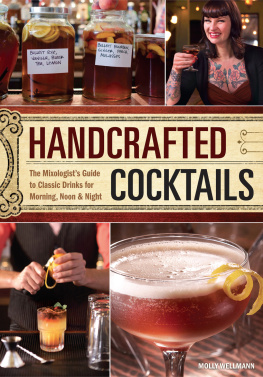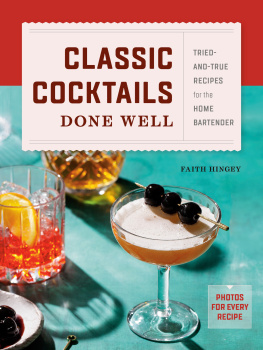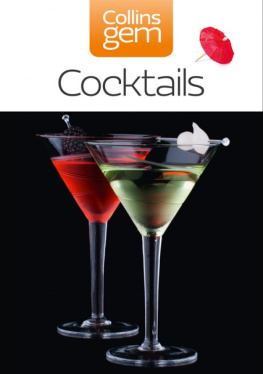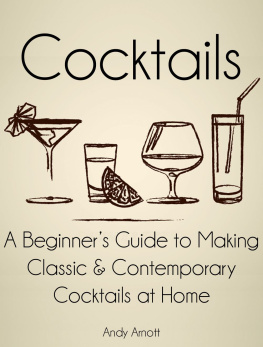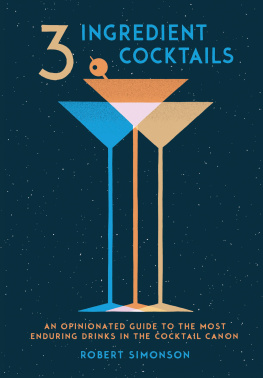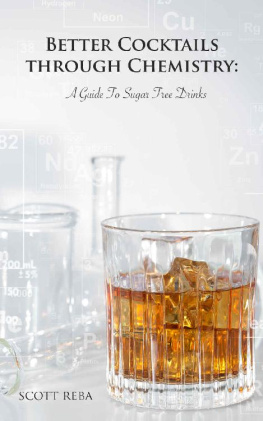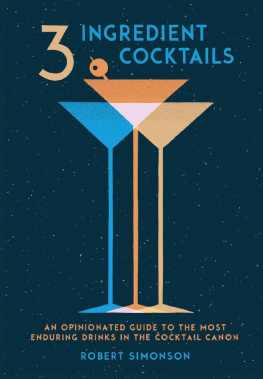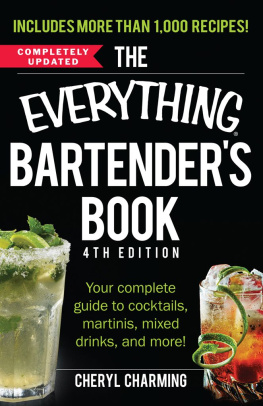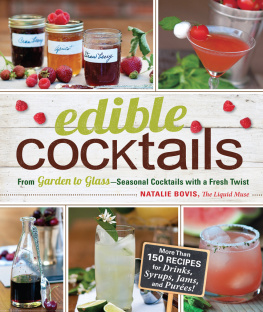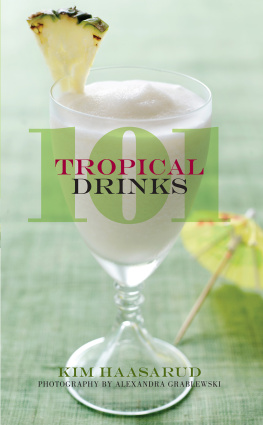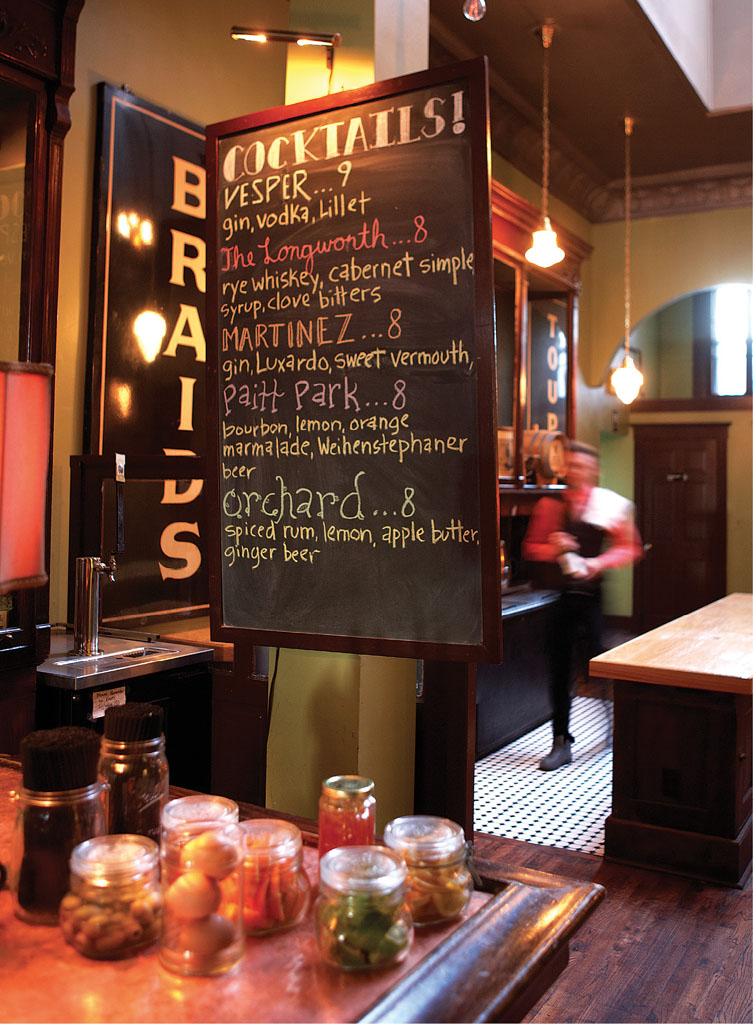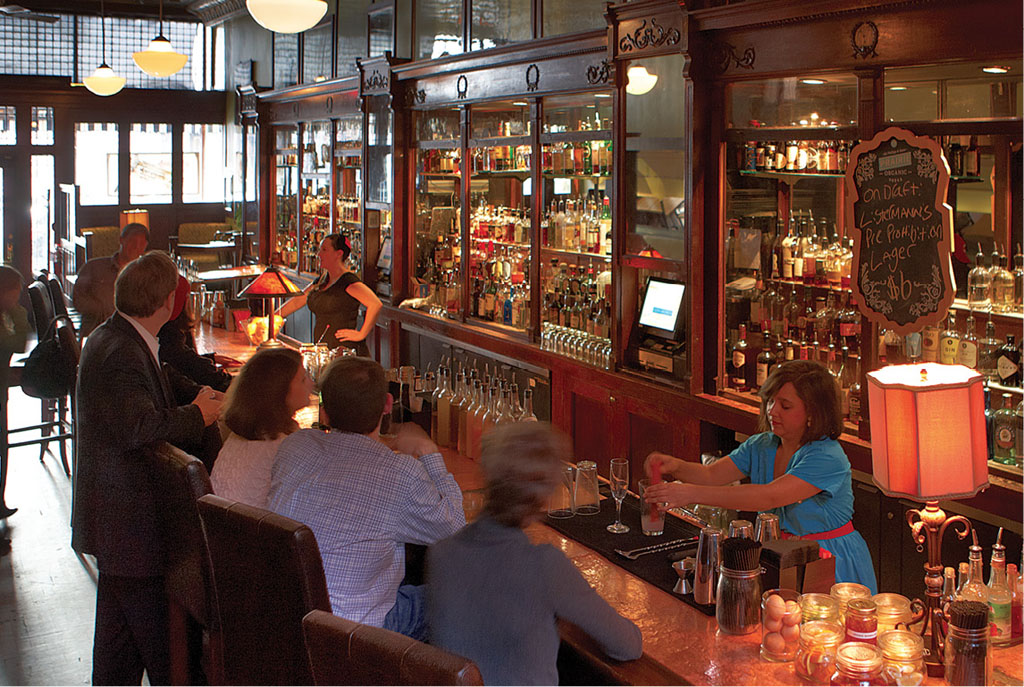Handcrafted Cocktails
The Mixologists Guide to Classic Drinks for Morning, Noon & Night
Molly Wellmann
CINCINNATI, OHIO
WWW.BETTERWAYBOOKS.COM
Contents
CHAPTER 1
CHAPTER 2
CHAPTER 3
CHAPTER 4
CHAPTER 5
CHAPTER 6
CHAPTER 7
Introduction
This book is what my bar, Japps, is all about. Japps is the kind of bar I want to spend time in. Although there are many fine drinking establishments in Cincinnati, I couldnt find any that had a feeling of stepping back in time. It seemed that each bar I entered contained a conversation-killing television that continually flashed ESPN in patrons faces. I dont know why, but to me, televisions in bars seem cheap and kind of rude. I wanted a place that presented an entirely new bar experience for twenty-first century patrons by creating an environment that referenced a bygone time when people drank and socialized at a bar without needing to scream to be heard. I wanted a place where the only thing that diverted a good conversation was catching a glance of a hot Tomato or a gorgeous sheik of a man (but not in the commercial on television).
I also wanted the drinks to reflect the same quality as those made a hundred years ago, when bartenders used quality, fresh ingredients and balanced the flavors instead of making them too sweet. I was sick of ordering cocktails made from cheap, artificially flavored, neon-colored liqueurs made with high-fructose corn syrup that left a chemical aftertaste. I wanted a place where I could get a well-balanced drink that was carefully crafted by a bartender who could tell me more about the spirits I was about to enjoy. I wanted a place where the bartender would showcase new liquors on the shelf and sell me on what made that liquor so special.
So Japps was born.
Drink in Some Knowledge
Im obsessed with cocktails and spirits. I always say that Im a weird kind of alcoholic. I find the stories about the liquor as intoxicating as the drinks themselves. I drink in as much knowledge about spirits and cocktails as I can until Im giddybut I can still drive at the end of that experience. And I dont have to go to rehab yet. (Im secretly kind of a lightweight. When I do drink, I can handle only about three drinks in a night before Im a little bit loopy.) I love to learn the stories about where everything comes from. I always have.
Alcohol has had its hand in almost every part of civilized history. Humans have been drinking beer and wine since before 8,000 B.C. and distilled spirits since around 800 B.C. The fermentation process is believed to have been discovered by accident. Someone left some water in some grain, forgot about it for a few days, and then drank. The resulting beverage made the drinker feel good. According to legend, wine was discovered more than eight thousand years ago in Persia, during the reign of the great king Jamshid. It was a time of great discoveries that made life easier and more enjoyable. The legend goes that the king banished a woman from his harem. This woman was so devastated that she decided suicide was the only answer to the pain she was feeling. So she went to the kings warehouses and found a jar marked poison. The jar contained spoiled grapes that were thought to be undrinkable and poisonous. In reality, the grapes hadnt spoiled. They had been broken down by the yeast in the air and fermented. After drinking the fermented grape juice, the woman felt light and elated. She took the discovery back to the king, who loved it. He let the woman back into his harem and declared that from that day forward, all the grapes were to be used to make wine.
The Chinese started distilling fermented rice to create rice wine. The distilling process spread, and people began using it with grapes to create wine. In areas where grapes didnt grow, people would distill grain to make alcohol. Not all distillers were seeking libations. Some believed distilling wine would make gold. Others used the distilling process to make perfume or medicine.
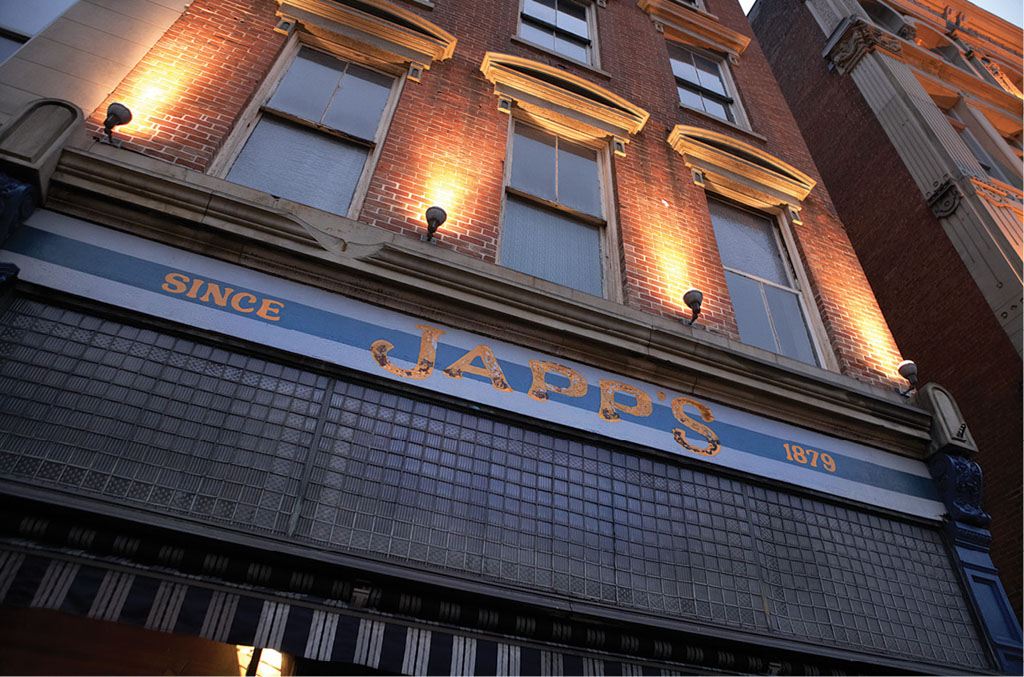
People have been mixing herbs, fruit, and sugar into their alcohol since they started to drink distilled spirits, mostly to cover up the harsh flavors of the liquor, but also for medicinal purposes. For instance, the gin and tonic comes from the British sailors practice of mixing their quinine, which was horribly bitter, with their ration of gin and a bit of sugar. The lime was added to prevent scurvy. The distilling and fermentation process also kills harmful microbes found in water, making it safer to drink a distilled or fermented drink rather than the water, especially in densely populated areas where sanitation was minimal to non-existent, and cholera and dysentery were real threats carried in drinking water.
Bartenders began writing down recipes for mixed drinks and creating reference guides for making drinks starting in the nineteenth century. Jerry Thomas was the first to do this, publishing The Bar-Tenders Guide in 1862. Before Thomass guide, bartenders learned new drinks from travelers who asked for mixed drinks theyd had at a bar in another city they had passed through.

The Burnet House, where Christopher F. Lawlor rose to national acclaim. (Image courtesy of cincinnativiews.net)
Here in Cincinnati, Christopher F. Lawlor was the best bartender in town in the late 1800s. He tended bar at a few local establishments (and in those days, there were quite a fewmore than 1,800 saloons in downtown) including The Grand Hotel, which was located on Fourth and Central, before becoming the chief bartender at the Burnet House, one of the citys grandest hotels operating from 18501926. During his time at the Burnet House, Lawlor earned the nickname The Prince of Mixologists and rose to national acclaim in the 1890s. He worked special parties around the city, edited a newsletter about wine and spirits, and wrote a cocktail book entitled The Mixicologist: or How to Mix All Kinds of Fancy Drinks: An Up-To-Date Recipe Book. It was the first cocktail book written in Cincinnati and one of only sixteen cocktail books in print when it was released in 1895. The book is packed with the best cocktails, punches, and even tempest drinks of the time. It includes recipes that are unique to Cincinnati, such as the Cincinnati cocktail and the Spificator, which is basically a highball (but Ill always call it a Spificator!). The book is even more fascinating because its packed with advertisements for businesses in and around Cincinnati during the 1890s. At the turn of the twentieth century, Lawlor exited the bartending business in favor of publishing and moved to Cleveland. Hes buried on the west side of Cincinnati. Though I own many cocktail books, The Mixicologist is by far my favorite, and Im proud to be following in Lawlors footsteps by writing the second cocktail book to come out of Cincinnati and by making drinks that I feel both you, my reader, and my Cincinnati patrons can enjoy for a long time to come.

